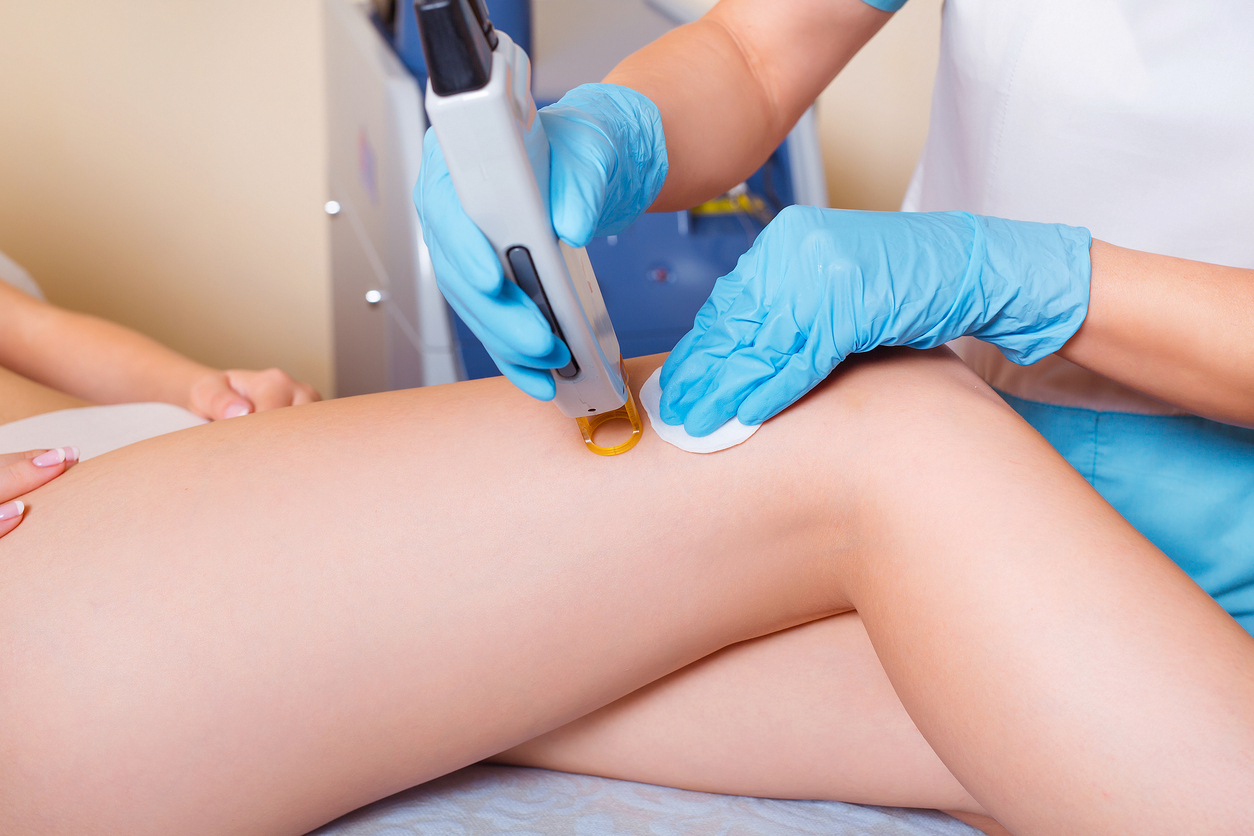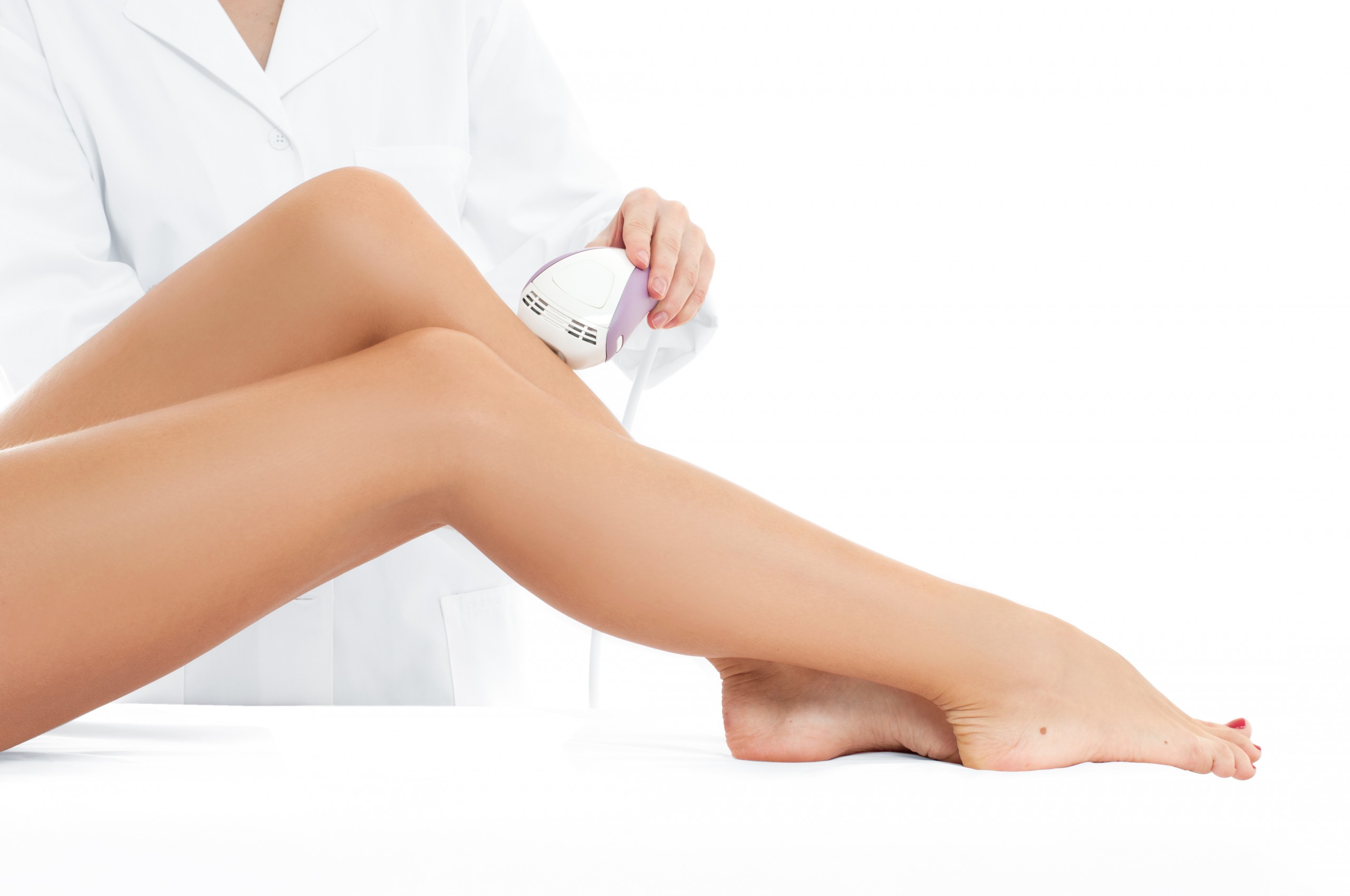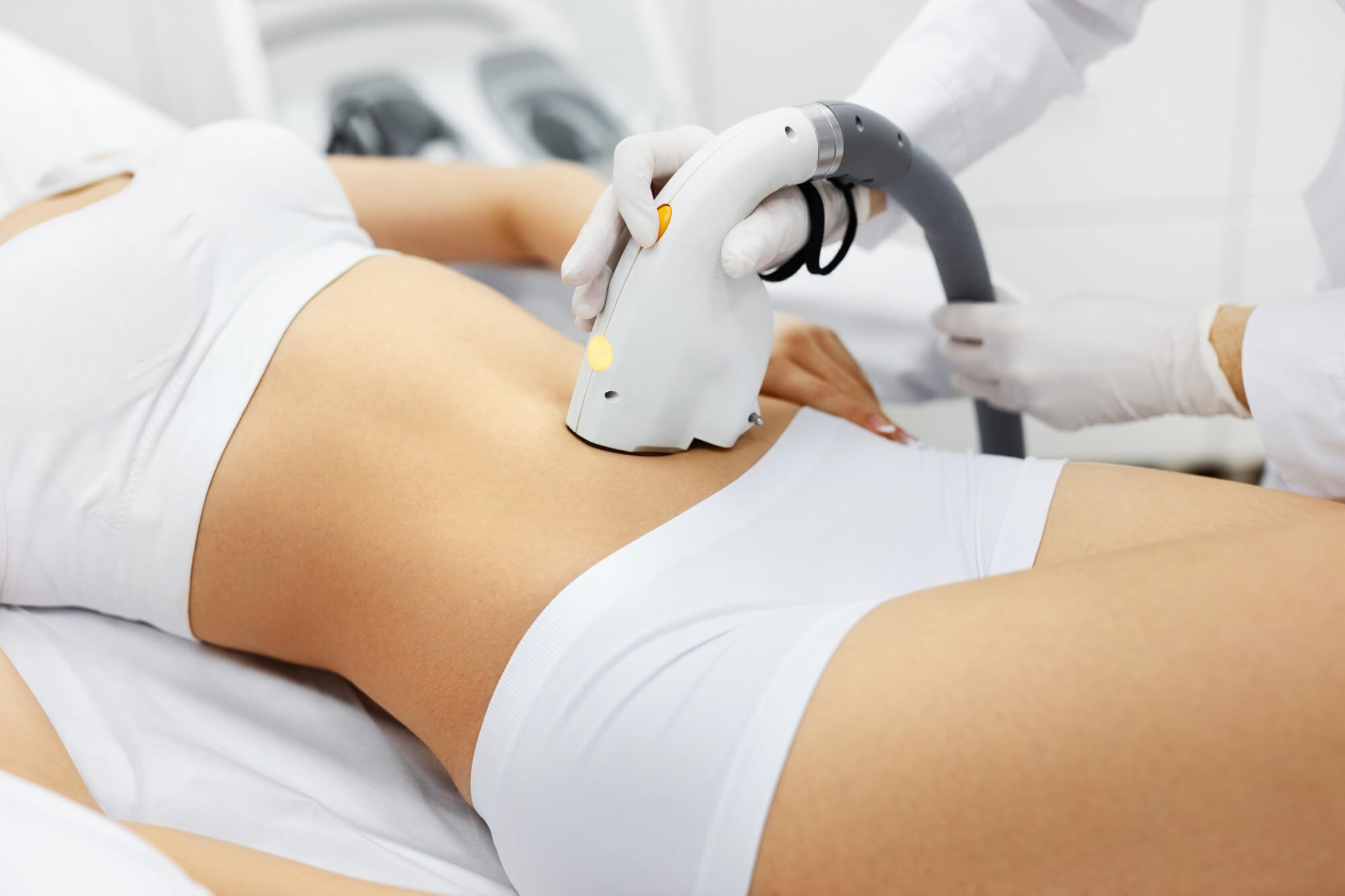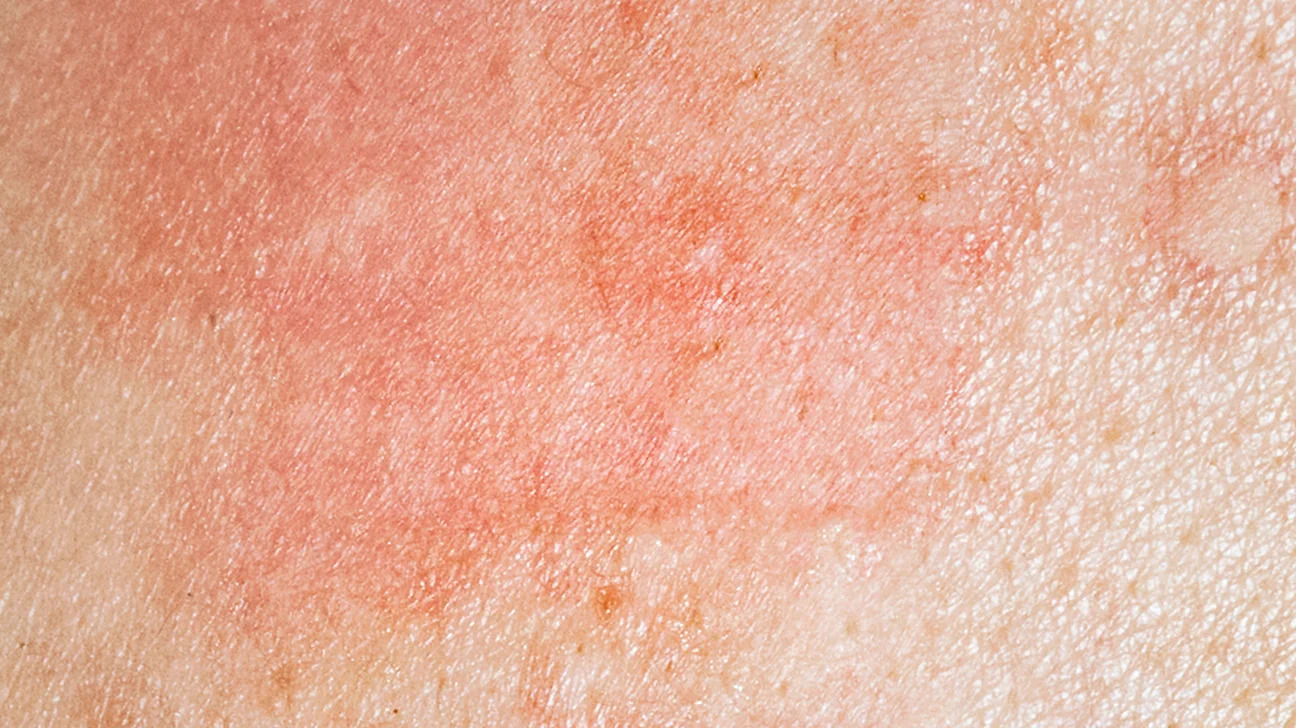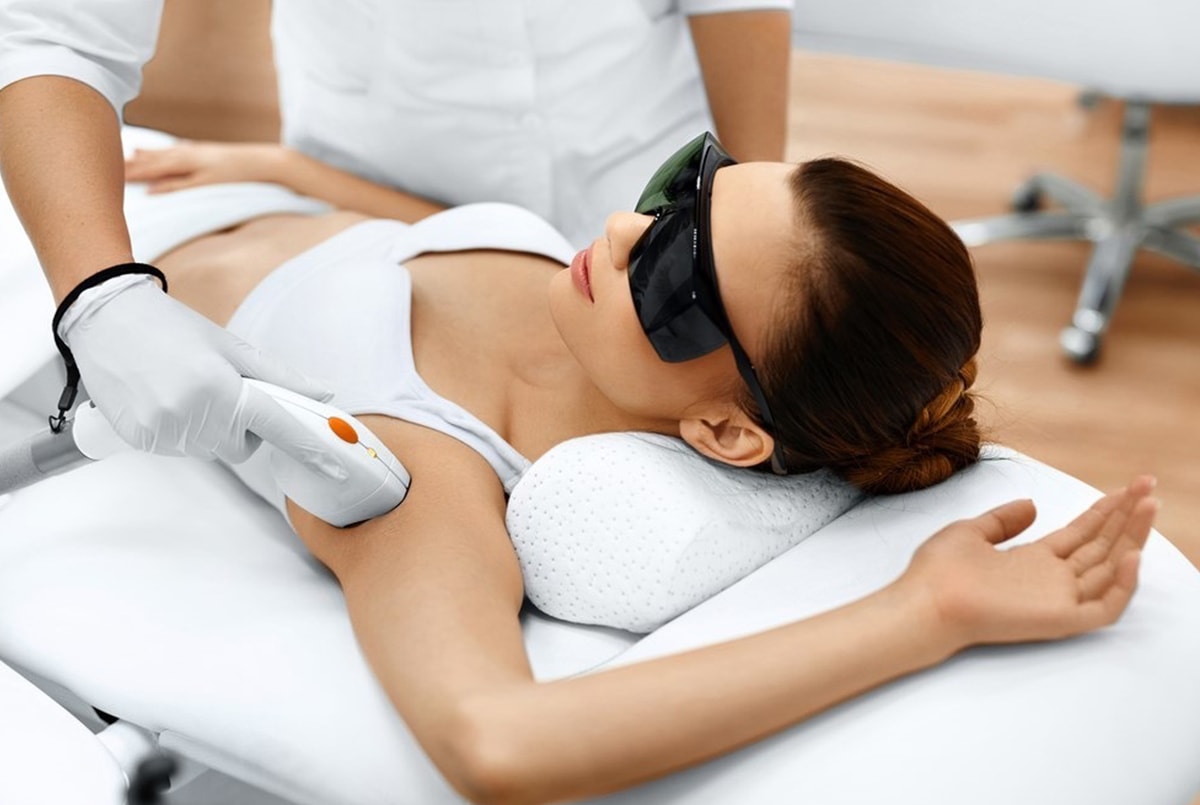Home>How-to Guides>For Women>How To Prepare Before Laser Hair Removal


For Women
How To Prepare Before Laser Hair Removal
Modified: September 23, 2023
Get ready for laser hair removal with these essential tips for women. Prepare yourself physically and mentally for a smooth and successful experience.
(Many of the links in this article redirect to a specific reviewed product. Your purchase of these products through affiliate links helps to generate commission for Under-tec.com, at no extra cost. Learn more)
Table of Contents
- Introduction
- Understanding Laser Hair Removal
- Consultation with a Professional
- Preparing for Laser Hair Removal
- Avoiding Sun Exposure
- Shaving the Treatment Area
- Removing Any Hair Removal Products
- Avoiding Certain Medications
- Moisturizing the Skin
- Cleansing the Treatment Area
- Arriving with Clean, Makeup-Free Skin
- Wearing Suitable Clothing
- Managing Expectations
- Conclusion
Introduction
Laser hair removal has become an increasingly popular method for achieving smooth, hair-free skin. It offers a long-lasting solution for individuals looking to reduce unwanted hair growth, eliminating the need for constant waxing, shaving, or plucking. However, before undergoing the laser hair removal treatment, proper preparation is crucial to ensure optimal results and minimize potential risks.
In this article, we will delve into the essential steps you need to take before your laser hair removal session. By following these tips, you can enhance the effectiveness of the treatment and make the process as comfortable as possible.
Understanding the laser hair removal procedure is the first step. This non-invasive procedure uses concentrated beams of light to target the pigment in hair follicles. The heat from the laser damages the hair follicles, preventing them from producing new hair. Laser hair removal can be used on various body parts, including the face, legs, bikini area, and underarms. It is important to note that this method is most effective on individuals with dark hair and light skin tones, as the laser targets the contrast between the hair and skin color.
Before scheduling your laser hair removal appointment, it is essential to have a consultation with a professional. During this consultation, they will assess your skin and hair type to determine if you are a suitable candidate for the treatment. They will also discuss the expected results, number of sessions required, and potential risks and side effects.
Once you have cleared the consultation stage, it is time to start preparing for your laser hair removal session. Our next section will guide you through the necessary preparations to ensure the best possible outcome.
Understanding Laser Hair Removal
Laser hair removal is a cosmetic procedure that involves the use of a laser to target and destroy hair follicles. This treatment is an effective and long-lasting solution for individuals tired of traditional hair removal methods such as shaving, waxing, or plucking.
The process of laser hair removal works by emitting a concentrated beam of light into the hair follicles. The pigment in the hair follicles absorbs the light, which then converts into heat. This heat damages the hair follicles, inhibiting future hair growth.
It is important to note that while laser hair removal can significantly reduce hair growth, it is not a permanent solution. Over time, some hair may regrow, but it will generally be lighter in color and finer in texture compared to before the treatment.
Laser hair removal is most effective on individuals with dark hair and light skin tones. The contrast between the hair and skin color allows the laser to specifically target the hair follicles, while minimizing damage to the surrounding skin.
It is essential to undergo multiple laser hair removal sessions to achieve the best results. Hair grows in different stages, and the laser can only effectively target hair in the active growth phase. Therefore, multiple sessions are necessary to target all the hair follicles at different stages of growth.
One of the significant advantages of laser hair removal is that it can be performed on various body parts, including the face, legs, underarms, bikini area, and back. This makes it a versatile solution for both men and women looking to remove unwanted hair from different areas of their bodies.
While laser hair removal is generally safe, it is essential to consult with a professional before undergoing the treatment. They will assess your skin and hair type, evaluate any potential risks or contraindications, and ensure that laser hair removal is the right choice for you.
With a thorough understanding of laser hair removal, you can approach your treatment confidently and make informed decisions regarding your hair removal journey. In the next section, we will discuss the importance of scheduling a consultation with a professional before undergoing laser hair removal.
Consultation with a Professional
Prior to undergoing laser hair removal, it is crucial to schedule a consultation with a professional to ensure that you are a suitable candidate for the treatment. This initial step is essential in determining the effectiveness of the procedure and identifying any potential risks or contraindications.
During your consultation, a trained and experienced professional will evaluate your skin and hair type to determine if laser hair removal is the right choice for you. They will assess the contrast between your hair and skin color, as this plays a vital role in the effectiveness of the treatment. In some cases, individuals with darker skin tones may not be suitable candidates for laser hair removal due to the risk of skin damage or hyperpigmentation.
The professional will also take into consideration any underlying medical conditions or medications you may be taking that could interfere with the effectiveness or safety of the treatment. Certain medications, such as photosensitizing drugs or medications that thin the blood, may need to be temporarily discontinued prior to the laser hair removal sessions.
During the consultation, you will have the opportunity to discuss your expectations and desired outcomes. The professional will provide you with a realistic assessment of the results you can expect to achieve based on your individual circumstances. They will also inform you of the number of sessions required to achieve the desired outcome, as well as the interval between sessions.
This consultation is also an excellent opportunity to address any concerns or questions you may have regarding the treatment process, potential side effects, and post-treatment care. The professional will guide you through the entire process, ensuring that you have a complete understanding of what to expect before, during, and after each laser hair removal session.
By scheduling a consultation with a professional, you can feel confident that you are making an informed decision about undergoing laser hair removal. Their expertise and thorough evaluation will help determine if the treatment is suitable for you and ensure that your safety and satisfaction are prioritized throughout the process. In the next section, we will discuss the necessary steps to take in preparing for your laser hair removal sessions.
Preparing for Laser Hair Removal
Proper preparation before your laser hair removal session is essential to maximize the effectiveness of the treatment and minimize any potential risks or complications. Follow these steps to ensure you are ready for your laser hair removal session:
- Avoid sun exposure: It is important to avoid sun exposure, including tanning beds and self-tanning creams, for at least four weeks prior to your laser hair removal session. Sun exposure can make your skin more sensitive to the laser and increase the risk of side effects such as burns or hyperpigmentation.
- Shave the treatment area: A day or two before your laser hair removal session, you should shave the treatment area. This ensures that the laser is targeting the hair follicles rather than the surface hair, allowing for more effective results.
- Remove any hair removal products: Avoid using any hair removal products, such as waxing, plucking, or depilatory creams, in the weeks leading up to your laser hair removal session. These methods remove the hair follicles, which are the target of the laser. The presence of hair follicles is necessary for the treatment to be effective.
- Avoid certain medications: Some medications, such as blood thinners and photosensitizing drugs, can increase the risk of complications during your laser hair removal session. It is important to inform your professional about any medications or supplements you are taking so they can advise you on whether to temporarily discontinue them before the treatment.
- Moisturize the skin: Keeping your skin well-hydrated in the days leading up to your laser hair removal session can help minimize skin irritation during and after the treatment. Apply a gentle moisturizer to the treatment area to keep the skin moisturized and healthy.
- Cleanse the treatment area: On the day of your appointment, make sure to thoroughly cleanse the treatment area. Remove any lotions, oils, or creams to ensure that the laser can effectively target the hair follicles.
- Arrive with clean, makeup-free skin: It is best to arrive at your laser hair removal session with clean, makeup-free skin. This allows the professional to accurately assess and target the treatment area.
- Wear suitable clothing: Choose loose-fitting clothing for your laser hair removal session to ensure comfort and ease during the procedure. Tight or restrictive clothing can cause friction or discomfort on the treated area.
- Manage expectations: Laser hair removal requires multiple sessions to achieve desired results. It is important to have realistic expectations and understand that significant reduction in hair growth will occur over time, rather than immediately after the first session.
By following these preparation steps, you can optimize the effectiveness of your laser hair removal treatment and minimize any potential complications. The next section will provide additional information on managing your expectations throughout your laser hair removal journey.
Avoiding Sun Exposure
Before undergoing laser hair removal, it is crucial to avoid sun exposure for at least four weeks prior to your session. Sun exposure can have a significant impact on the effectiveness and safety of the treatment.
Excessive sun exposure can make your skin more sensitive to the laser, increasing the risk of side effects such as burns, blisters, or hyperpigmentation. The heat from the laser can interact with the melanin in your skin, causing these unwanted reactions. Darker skin tones are more prone to these side effects due to the higher concentration of melanin in the skin.
To protect your skin from the sun, you should avoid tanning beds, sunbathing, and prolonged exposure to direct sunlight. If you need to be outdoors, be sure to wear protective clothing such as wide-brimmed hats, long sleeves, and sunglasses. Additionally, apply a broad-spectrum sunscreen with a high sun protection factor (SPF) of 30 or higher, and reapply it every two hours or after swimming or sweating.
It is important to note that a tan, whether from natural sun exposure or a tanning bed, can interfere with the laser’s ability to target the hair follicles effectively. When the skin is tanned, it contains more melanin, making it harder for the laser to distinguish between the hair follicles and the surrounding skin. This can result in less effective hair removal and an increased risk of complications.
If you have a sunburn or highly tanned skin, it is best to reschedule your laser hair removal session. Give your skin enough time to heal and return to its normal color before undergoing treatment. This will ensure that the laser can accurately target the hair follicles and reduce the risk of adverse effects.
It is also important to continue practicing sun protection after your laser hair removal sessions. Your skin may be more sensitive to the sun for a few weeks following treatment. Be sure to apply sunscreen daily, wear protective clothing, and limit sun exposure to maintain the health and appearance of your skin.
By avoiding sun exposure before and after your laser hair removal sessions, you can protect your skin, minimize the risk of side effects, and improve the overall results of the treatment. In the next section, we will discuss the importance of shaving the treatment area prior to your session.
Shaving the Treatment Area
Prior to your laser hair removal session, it is important to ensure that the treatment area is properly shaved. Shaving the area helps to enhance the effectiveness of the laser treatment and allows the laser to target the hair follicles directly.
Shaving the treatment area a day or two before your laser hair removal session ensures that the laser focuses on the hair follicles beneath the skin’s surface, rather than wasting energy on the hair above the skin. By removing the visible hair, the laser can penetrate the skin and target the melanin in the hair follicles, effectively disrupting their growth.
Shaving is the preferred method of hair removal prior to laser treatments because it does not remove the hair follicles themselves. Other hair removal methods, such as waxing, plucking, or using depilatory creams, remove the entire hair shaft, including the follicle. Without the hair follicle, the laser has no target to treat, diminishing the effectiveness of the treatment.
When shaving the treatment area, it is important to use a clean and sharp razor. Dull blades can increase the risk of irritation or shaving cuts. It is also essential to shave in the direction of hair growth to minimize the risk of ingrown hairs or irritation.
While it is crucial to shave before your laser hair removal session, it is equally important not to wax, tweeze, or use depilatory creams in the weeks leading up to the treatment. These methods remove the hair follicle, which is necessary for the laser to target during the session. Ensure that there is visible hair in the treatment area so that the laser can effectively destroy the hair follicles.
It is important to communicate with your laser hair removal professional if you have any concerns or questions about shaving the treatment area. They can provide specific instructions and guidelines tailored to your skin and hair type to ensure that you achieve the best possible results from your laser hair removal sessions.
By properly shaving the treatment area before your laser hair removal session, you can optimize the effectiveness of the treatment and ensure that the laser targets the hair follicles accurately. In the next section, we will discuss the importance of removing any hair removal products from the treatment area.
Removing Any Hair Removal Products
Before undergoing laser hair removal, it is crucial to remove any hair removal products from the treatment area. This includes avoiding methods such as waxing, plucking, or using depilatory creams in the weeks leading up to your laser hair removal session.
The reason for removing these products is that they remove the entire hair shaft, including the hair follicle. Laser hair removal targets the melanin in the hair follicles, which are necessary for the laser to effectively destroy the follicles and inhibit future hair growth.
Using methods like waxing or plucking can eliminate the hair follicles, making them unable to absorb the laser energy during the treatment. This diminishes the effectiveness of the laser hair removal session and may require additional sessions to achieve the desired results.
In the weeks leading up to your laser hair removal session, it is essential to allow the hair to grow back to a visible length. The presence of hair follicles is necessary for the laser to accurately target and destroy them. Ideally, the hair in the treatment area should be short enough that it can be easily shaved before the appointment.
By removing any hair removal products and ensuring that there is visible hair in the treatment area, you enable the laser to penetrate the skin and target the hair follicles effectively. This allows for optimal results and a smoother hair removal process.
It is important to communicate with your laser hair removal professional about the removal of any hair removal products. They can provide specific instructions and guidelines tailored to your skin and hair type to ensure the best outcome from your laser hair removal sessions.
Taking the necessary steps to remove any hair removal products from the treatment area prior to your session will maximize the effectiveness of the laser treatment, allowing for more successful hair removal. In the next section, we will discuss the importance of avoiding certain medications before your laser hair removal sessions.
Avoiding Certain Medications
Before undergoing laser hair removal, it is important to inform your laser hair removal professional about any medications or supplements you are taking. Certain medications can increase the risk of complications or interfere with the effectiveness of the treatment. It is crucial to follow their advice and avoid certain medications before your laser hair removal sessions.
One category of medications to be cautious of is blood thinners or anticoagulants. These medications are commonly used to prevent blood clots, but they can increase the risk of bruising or bleeding during the laser hair removal treatment. It is advisable to temporarily discontinue the use of blood thinners before your session. However, it is important to consult with your prescribing physician before making any changes to your medication regimen.
Additionally, some medications can make your skin more sensitive to light. These photosensitizing drugs may increase the risk of adverse reactions, such as burns or skin discoloration, when exposed to laser light. It is essential to inform your healthcare provider if you are taking any medications that may have photosensitizing effects. They will guide you on whether to pause or adjust your medication schedule before your laser hair removal session.
It is also vital to avoid using topical products that contain retinoids or exfoliating agents in the treatment area prior to your laser hair removal session. These products can make your skin more sensitive and potentially increase the risk of adverse effects during the treatment. It is advisable to discontinue the use of these products for a week or more before your session to ensure the safety and effectiveness of the laser hair removal treatment.
During your consultation with a professional, be sure to provide a comprehensive list of all medications you are currently taking, including over-the-counter medications, herbal supplements, and vitamins. This allows the professional to fully assess any potential risks or contraindications associated with the medications and ensure the safety of the laser hair removal treatment.
By avoiding certain medications or temporarily discontinuing them before your laser hair removal sessions, you can minimize the risk of complications and optimize the effectiveness of the treatment. In the next section, we will discuss the importance of moisturizing the skin prior to your laser hair removal session.
Moisturizing the Skin
Prior to your laser hair removal session, it is important to keep your skin well-moisturized. Properly moisturized skin can help minimize potential side effects and improve the overall comfort and effectiveness of the treatment.
Dry or dehydrated skin can be more prone to sensitivity and irritation during laser hair removal. The laser may cause discomfort or even mild burns when applied to dry skin. Therefore, it is recommended to regularly moisturize the treatment area in the days leading up to your session.
Choose a gentle moisturizer that is suitable for your skin type and free from fragrances or harsh ingredients that could potentially cause irritation. Apply the moisturizer to the treatment area at least twice a day, paying extra attention to areas that tend to be drier, such as the legs or arms. Keeping your skin well-hydrated will create a protective barrier and reduce the risk of adverse reactions.
Moisturizing your skin can also help alleviate any temporary dryness or flakiness that may occur after laser hair removal. Some individuals may experience mild redness or dryness after the treatment, which typically resolves within a few days. Regularly moisturizing your skin post-treatment can help promote faster healing and restore the skin’s natural balance.
It is important to note that you should avoid applying moisturizer or any other products on the day of your laser hair removal session. This allows the skin to be clean and free from any residues that could interfere with the laser’s effectiveness.
By maintaining well-moisturized skin before your laser hair removal session, you can enhance the comfort of the treatment and reduce the risk of side effects. Be sure to follow the recommendations of your laser hair removal professional regarding moisturizing the treatment area to ensure the best results. In the next section, we will discuss the importance of cleansing the treatment area prior to your laser hair removal session.
Cleansing the Treatment Area
Prior to your laser hair removal session, it is crucial to thoroughly cleanse the treatment area. Cleansing the skin helps remove any dirt, oil, or products that could interfere with the effectiveness of the laser treatment.
Start by washing the treatment area with a gentle cleanser that is suitable for your skin type. Use lukewarm water and your fingertips to gently massage the cleanser into the skin. Avoid using harsh scrubs or exfoliants, as they can cause irritation and make the skin more sensitive to the laser.
Thorough cleansing ensures that the laser can penetrate the skin and target the hair follicles accurately. Any residue from lotions, oils, or creams can interfere with the laser energy absorption and reduce the effectiveness of the treatment.
After cleansing, pat the treatment area dry with a clean towel. Avoid rubbing the skin, as this can cause irritation. It is important to make sure that the skin is completely dry before your laser hair removal session to prevent water from interfering with the laser’s function.
If you have applied any products to the treatment area, such as deodorant or lotions, be sure to remove them before the session. These products can create a barrier on the skin that may affect the laser’s ability to penetrate the hair follicles.
By thoroughly cleansing the treatment area before your laser hair removal session, you ensure that the laser can target the hair follicles effectively. This maximizes the results of the treatment and reduces the risk of any adverse effects. Follow the instructions provided by your laser hair removal professional regarding cleansing the treatment area to achieve the best outcome.
In the next section, we will discuss the importance of arriving at your laser hair removal session with clean, makeup-free skin.
Arriving with Clean, Makeup-Free Skin
When it comes to laser hair removal, it is essential to arrive at your session with clean, makeup-free skin. This ensures that the laser can accurately target the hair follicles and allows for a more effective and comfortable treatment.
Makeup, including foundation, powder, and other cosmetic products, can create a barrier on the skin. This barrier may interfere with the penetration of the laser energy and hinder its ability to target the hair follicles. By arriving with clean, makeup-free skin, you enhance the efficacy of the laser hair removal treatment.
Prior to your session, cleanse your face thoroughly to remove any makeup, dirt, or oils. Use a gentle cleanser that is suitable for your skin type and rinse with lukewarm water. Pat dry with a clean towel, making sure not to rub or irritate the skin.
In addition to cleansing your face, it is important to remove any makeup or products from the treatment area on your body as well. Use a gentle cleanser or mild soap to wash the area, ensuring that all residues are completely removed. Dry the skin thoroughly before your laser hair removal session.
By arriving with clean, makeup-free skin, you provide a clear canvas for the laser to target the hair follicles precisely. This improves the accuracy and efficiency of the treatment, maximizing the results you can achieve.
If you prefer to wear makeup to your laser hair removal session, it is advisable to remove it before the treatment begins. While some facilities may provide wipes or cleansers to remove makeup, it is always best to come prepared with clean skin to ensure a smooth and successful treatment.
Following the guidelines provided by your laser hair removal professional regarding arriving with clean, makeup-free skin helps ensure that you have the best possible experience and achieve your desired hair removal results. In the next section, we will discuss the importance of wearing suitable clothing for your laser hair removal session.
Wearing Suitable Clothing
Choosing the right clothing for your laser hair removal session is an important aspect that can contribute to a comfortable and successful treatment. While your laser hair removal professional will provide specific instructions, here are some general guidelines to follow when selecting suitable clothing for your session.
Opt for loose-fitting clothing on the day of your laser hair removal appointment. Loose clothing allows for better airflow and minimizes friction on the treated area. This can help alleviate any potential discomfort during and after the treatment.
Avoid tight or restrictive clothing that may rub against the treated area. Tight clothing can cause irritation, especially if the skin is sensitive after the session. Opt for breathable fabrics that allow the skin to breathe, such as cotton or linen, to ensure maximum comfort.
Consider the location of the treatment area when choosing your attire. For example, if you are having laser hair removal on your legs, wear loose-fitting shorts, a skirt, or loose pants. For underarm or bikini area treatments, opt for tops or bottoms that are easy to remove and put back on.
It is advisable to avoid wearing any accessories or jewelry that may interfere with the laser treatment. Remove necklaces, bracelets, or any accessories that could come into contact with the treated area. This will prevent any unnecessary discomfort or risks during the session.
Wearing suitable clothing not only ensures your comfort but also allows the laser hair removal professional to access and treat the desired areas effectively. By following their guidance and wearing appropriate attire, you can enhance the overall experience and achieve the desired results from your laser hair removal treatment.
By following these guidelines and consulting with your laser hair removal professional, you can select suitable clothing that caters to your comfort and supports an effective treatment. In the next section, we will discuss the importance of managing your expectations throughout your laser hair removal journey.
Managing Expectations
When it comes to laser hair removal, managing your expectations is crucial for a positive experience. Laser hair removal is a gradual process that requires multiple sessions to achieve optimal results. It’s important to have realistic expectations and understand the factors that can influence the outcome.
First and foremost, it’s important to note that laser hair removal does not guarantee complete hair removal. While it can significantly reduce hair growth, some hair may still regrow over time. However, the regrowth is typically finer and lighter in color, making it less noticeable than before.
Another factor to consider is that laser hair removal is most effective for individuals with dark hair and light skin tones. The laser targets the contrast between the hair follicles and the surrounding skin, so individuals with lighter hair colors or darker skin tones may experience less effective results. It’s important to have a thorough consultation with a professional to determine if you are a suitable candidate for the treatment.
Patience is key when it comes to laser hair removal. Results are not immediate, and it takes time for the hair follicles to be permanently damaged and inhibit future hair growth. You will typically need several sessions, spaced a few weeks apart, to achieve the desired results. It’s important to follow the recommended treatment plan provided by your professional and attend all scheduled sessions for the best outcome.
Every individual’s response to laser hair removal can vary. Factors such as hair density, hair thickness, and hormonal changes may influence the treatment’s effectiveness. Additionally, certain areas of the body may respond differently to the treatment. For example, the face and underarms may require more sessions than the legs or bikini area. It’s important to have realistic expectations and understand that individual results can vary.
During your laser hair removal journey, it’s important to communicate openly with your laser hair removal professional. They can provide guidance, address any concerns or questions you may have, and adjust the treatment plan if needed. They will also provide you with information about post-treatment care, including skincare recommendations and any precautions to take.
By managing your expectations, understanding the factors that influence the effectiveness of laser hair removal, and maintaining open communication with your professional, you can have a positive and successful laser hair removal experience. In the next section, we will provide a summary of the key points discussed.
Conclusion
Laser hair removal offers a convenient and long-lasting solution for individuals looking to reduce unwanted hair growth. By following the proper steps before your laser hair removal session, you can enhance the effectiveness of the treatment and minimize the risk of complications.
It is crucial to schedule a consultation with a professional to assess your suitability for the treatment and discuss your expectations. This initial step ensures a personalized approach to your laser hair removal journey.
Preparation steps include avoiding sun exposure, shaving the treatment area, removing any hair removal products, and avoiding certain medications. These steps help optimize the effectiveness of the laser treatment and minimize potential risks.
Moisturizing the skin, cleansing the treatment area, arriving with clean, makeup-free skin, and wearing suitable clothing are also essential to ensure a comfortable and successful laser hair removal session.
Managing expectations is key throughout the process. Understanding that laser hair removal provides a gradual reduction of hair growth, and that individual results may vary, helps set realistic goals and promotes a positive experience.
By following these guidelines and working closely with your laser hair removal professional, you can achieve smooth, hair-free skin and enjoy the benefits of this advanced hair removal method.

